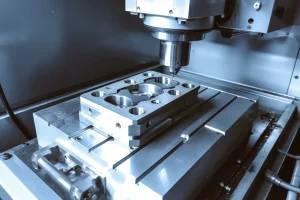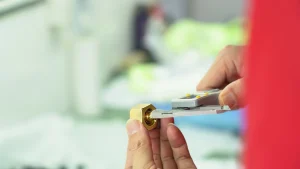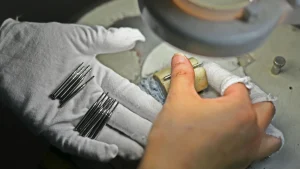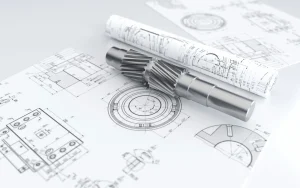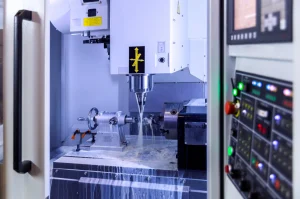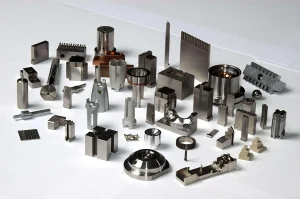有很多冲压过程, 伸展是其中之一. This process has a wide range of applications, and has a certain role in some covers and covers of automobiles and decorative shells, shells of electrical instruments, and many daily necessities. Stretched parts have three geometric shapes: rotating parts, box-shaped parts, and complex curved surface parts.

Requirements for stamping and stretching processing:
1. The shape of the stretched parts should be as simple and symmetrical as possible
In the circumferential direction, the axisymmetric stretched parts will be uniformly deformed, and the molds at this time are also easier to process, and the processability is also the best. For stretched parts of other shapes, try to avoid sharp contour changes. 例如, the rear cover of the automobile muffler, under the premise of ensuring the use requirements, the simplified shape will make the production process from multiple processes to one or two processes, and the material consumption will be reduced by half.
2. The size ratio of each part of the stretched part should be appropriate
It is necessary to avoid designing flanges and deep stretched parts as much as possible, because such workpieces require more stretching times. 例如, the upper and lower dimensions of the workpiece are too different, which does not meet the requirements of the stretching process. If you want to make it meet the requirements, you can divide it into two parts, process and manufacture them separately, and then connect them. If the workpiece cavity is not deep, but the flange diameter is large, the manufacturing difficulty is also very large, and annealing treatment is required in the middle. If the flange diameter is reduced, intermediate annealing can be omitted. The outer contour of the workpiece flange is preferably similar to the contour shape of the deep part of the drawing. If the width of the flange is inconsistent, not only will the drawing be difficult, additional processes will be required, but also the trimming allowance will need to be relaxed, increasing metal consumption.
3. The fillet radius of the drawn part should be appropriate
In order to facilitate forming and reduce the number of drawing times, the fillet radius of the drawn part should be increased as much as possible. The fillet radius between the bottom and wall of the drawn part, the flange and the wall, and the four walls of the rectangular part must meet the requirements.
4. The uneven thickness of the drawn part should be considered
The inner and outer walls of the workpiece that has been stretched multiple times or the flange surface of the flanged drawn part should be allowed to have marks generated during the stretching process. Unless there are special requirements for the workpiece, shaping or rushing methods can be used to eliminate these marks
5. The hole positions on the drawn part should be arranged reasonably
The hole positions on the drawn part should be set on the main structural surface to keep it on a plane, or make the hole wall perpendicular to the plane, so that punching and trimming can be completed in one process at the same time.
6. The dimensional accuracy of the stretched parts should not be too high. The manufacturing accuracy of the stretched parts includes the accuracy in the diameter direction and the accuracy in the height direction. Under normal circumstances, the accuracy of the stretched parts should not exceed the specified value. The dimensions on the product drawing need to indicate the external dimensions or the inner cavity dimensions, and the internal and external dimensions cannot be marked at the same time.
7. Selection of stretching oil
In addition to considering the lubricity and cooling properties of the stretching oil, the rust resistance, cost and maintenance of the stretching oil should also be considered. Stretching oil is easy to use a relatively low viscosity base oil to add anti-friction additives, which can achieve lubrication and friction reduction, as well as good cooling and easy filtering. 然而, the problem with stretching oil is that it has a low flash point, high temperature during stamping, easy deformation, high risk factor, and fast evaporation, and the user’s use cost becomes higher accordingly. 所以, if conditions permit, try to use stretching oil with high pressure resistance and wear resistance.
Advantages of stretching oil:
1. The appearance of the stretching oil is clear and transparent, and it will not change the surface color of the workpiece; the odor is mild, reducing pollution to the workshop environment.
2. The corrosion performance of stretching oil to metal is a key indicator for the development of oil products. By controlling indicators such as acid value and sulfur content, it is ensured that the stretching oil does not corrode the metal, especially the water-soluble acid and alkali of the stretching oil.
3. Quick-drying and wash-free stretching oil has a good volatilization effect after operation. After volatilization, no stains remain on the working surface, so there is no need to further clean the workpiece.
4. In order to meet the needs of high-speed stamping processing, precision stretching oil has good extreme pressure lubrication, rust prevention and metal forming ability. It can reduce the friction heat of the stamping die, prevent the die temperature from being too high, resulting in a reduction in the gap between the convex and concave dies, causing sintering, strain, 等; it can reduce the wear and chip adhesion of the stamping die, and extend the service life of the stamping die.
5. Use environmentally friendly additives, low odor during use, and no harmful gases will be generated.
6. The stretching oil has low viscosity and good cooling performance, which improves production efficiency and workpiece processing quality.

